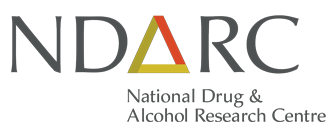
Key findings
- Eight hundred and seventy-seven people who inject drugs (PWID) were interviewed for the 2016 IDRS.
- Heroin remained the most commonly reported drug of choice for participants (46%) followed by any methamphetamine (29%), with a significant increase in those specifically reporting crystal methamphetamine as their drug of choice (15% in 2015 to 21% 2016).
- In 2016, similar proportions reported heroin (39%) and methamphetamine (40%) as the drug injected most in the last month. In particular there was a significant increase in crystal as the drug most often injected in the last month (28% in 2015 to 36% in 2016).
- The proportion of the national sample who reported recent heroin use (56%) remained stable and varied by jurisdiction. In 2016, ‘daily’ heroin use was reported by 41% of the national sample and 17% reported ‘weekly or more’ use. Heroin was reported to be ‘very easy’ to obtain and of ‘low to medium’ purity.
- The trend regarding the increased use of crystal and corresponding decrease in use of speed powder continued with a significant increase in the recent use of crystal (67% in 2015 to 73% in 2016) and significant decrease in speed powder (25% in 2015 to 20% in 2016).
- A significant increase in the frequency of use of crystal was reported (median of 30 days in 2016 vs. 20 days in 2015). Significantly more participants reported ‘weekly or more’ crystal use (33% in 2015 to 41% in 2016). The frequency of speed and base use remained stable.
- All forms of methamphetamine were considered ‘very easy’ or ‘easy’ to obtain. All forms were reported to be of ’medium’ to ‘high’ purity.
- Nationally, the recent use of cocaine remained stable (11%) and the frequency of use low. Cocaine was reported as ‘easy’ to obtain and similar proportions of the national sample reporting the purity as ‘low’, ‘medium’ or ‘high’.
- Large proportions (73%) report recent use of cannabis on a medium of 135 days in the last six months. A third (32%) of the sample report daily cannabis use. Hydroponic cannabis dominated the market.
- Extra-medical use and injection of pharmaceutical preparations continued to occur, with jurisdictional differences in patterns observed. Nationally, the proportions reporting recent use of oxycodone significantly decreased from 25% in 2015 to 21% in 2016, although use varied by jurisdiction. Nationally, 10% reported recently using fentanyl in 2016.
- Sharing injection equipment was common with a quarter of the sample having shared injecting equipment (excluding needles). Smaller proportions reported borrowing (7%) or lending (11%) needles. Around one-third of the participants (38%) re-used their own needles in the last month.
- Nearly half of the national sample (43%) self-reported having had a mental health problem in the last six months with depression the most commonly reported, followed by anxiety. Around one third (29%) of the national sample reported attending a health professional for their problem.
Download the Illicit Drug Reporting System (IDRS) Key Findings Handout for more detail
Resources
Date commenced
10 Oct 2016
Resource type
Illicit Drug Reporting System Bulletins
Author(s)
Jennifer Stafford, Lucinda Burns, Courtney Breen
- Overview
- News
- Our team
- References




